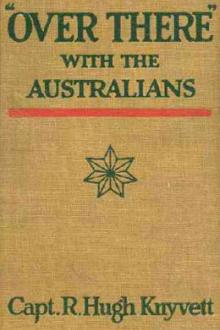From Silicon Valley to Swaziland by Rick & Wendy Walleigh (read aloud txt) 📖
- Author: Rick & Wendy Walleigh
- Performer: -
Book online «From Silicon Valley to Swaziland by Rick & Wendy Walleigh (read aloud txt) 📖». Author Rick & Wendy Walleigh
At the end of the day, Mkhululi got a call from the director of the Dairy Board. While we were having our private meeting, the larger meeting had restarted and the participants had hijacked the agenda. When we left the meeting, the dairy farmers were being facilitated through a SWOT (strengths, weaknesses, opportunities, and threats) analysis of the dairy industry in Swaziland. While the director was out of the room, the dairy farmers had revolted against continuing the SWOT and had said that their only purpose for the meeting was to agree on a price to demand from the milk processors. They agreed that they should demand E4.5 per liter, roughly double what the processors were paying for milk. All of this was completed by the time the director got back into the meeting room. He definitely had his work cut out for him!
One of the fascinating things about international development and particularly the TechnoServe approach is that you learn the details of topics that you could never have imagined that you would understand. My background in consulting was useful because for every consulting project, I had to quickly learn at least the essentials of the client’s business. Most of my consulting was in computer hardware, so I was pretty knowledgeable about computer marketing, manufacturing, product development, and customer service. I understood the details of manufacturing disk drives in China and how to configure personal computers in Ireland to ship to different countries in Europe. I had even branched out into understanding semiconductor manufacturing and software development. But I knew nothing about agriculture. In Africa, I had gotten introduced to the specifics of cotton and dairy production, and I got really familiar with pigs. Coming from an educational background in electrical engineering and business plus my career in the high technology industry, I could never have imagined that I would become so knowledgeable about the pork industry. Mkhululi was the business advisor for all of the feed and livestock industry and had concluded that not only could the pork industry be very viable in Swaziland, it could also provide income to a large number of poor rural farmers. His analysis caught my attention and interest because it suggested so much potential. In addition, I was enthralled with the unique terminology used in the industry. My favorite word was weaner. This, as might be suspected, is a little pig that has just been weaned from its mother. What made it funny to me was that these weaners would be fattened up and then sold to a butcher who would turn them into wieners. I know it’s silly, but every time I hear the word weaner, I still envision a little sausage with a head running around on four tiny legs.
Only slightly more serious, when pigs are born, they are suckers, who soon become weaners. They are then fed to be fattened up and grow into porkers. Most of the male porkers get sold to be slaughtered and turned into pork. Among the females, most of the culls (not chosen to become reproducing sows) also meet this fate. Some of both the male and female porkers get fattened up further to be sold as baconers. However, the best females are raised to be gilts (analogous to a heifer) ultimately to become breeding sows. When they have achieved a sufficient age, the gilts are serviced by either a boar or artificial insemination. Four months later, as sows, they give birth to approximately ten suckers. This cycle continues twice a year for about three years. By this time, the sows have become tired sows (no wonder), and they don’t produce as many suckers. So it’s off to the abattoir for the tired sows that get replaced by new gilts.
Although the terminology is amusing, the pork industry is a very serious business. Large piggeries can have thousands of animals at one time in all of the above stages. They plan and closely monitor all of the critical steps in the breeding and growing processes and the associated financials. They know how much feed an animal should eat at each stage and how much it should cost. They can tell you how many kilograms in weight a pig gains for each kilogram of feed it eats at each stage of a pig’s life. They know that a sow produces 9.8 piglets per litter and has 2.2 litters per year. It was fascinating, and I could work with the numbers.
On the other hand, the pig business stinks, literally not figuratively. I mean anywhere near a pig farm, it really smells bad. And you don’t get accustomed to the smell as you do with other odors. At least not during the several hours I spent on a pig farm.
More specifically, I had been helping Mkhululi with his modeling of a pork industry in Swaziland. Mkhululi had envisioned a pork industry with three tiers. At the top would be a “multiplier.” The primary objective of the multiplier would be to produce gilts (future sows). These gilts could then be sold to small farmers who would own one to a few sows. These breeding sows would produce piglets that would be sold at the weaner stage to larger growing farms that would fatten up the weaners and sell them to be slaughtered. Mkhululi thought that the business of owning sows and producing weaners could be a simple, profitable business not requiring much capital. For these reasons, it could be operated by relatively poor farmers, even starting with one sow. It sounded like just the kind of business that TechnoServe liked to develop.
However, Mkhululi had been having some trouble with the numbers. As he had conceived and modeled it, the multiplier wasn’t profitable. He knew that something must be wrong because there are people in the business, and they do make money. We had checked all of his assumptions on costs, birth rates, etc.; and still things weren’t coming out right. He needed experienced help, much more than I could give him. I suggested that he meet with one of the experts he had previously contacted to go over his numbers in detail and figure out the problem. He thought that was a good idea and that I should go along. I agreed. So we set out on a two-and-a-half-hour drive into South Africa to visit a gigantic pig farm and the manager who had graciously offered to help us.
Mkhululi had been to the pig farm before and thought he remembered how to get there. He didn’t ask for directions and didn’t need a map. As an interesting sidelight, most Swazis I met didn’t use maps. I later observed the same phenomenon in other African countries, but it was more pronounced in Swaziland. It might be that maps have historically not been available, but many Swazis will freely admit that they are not good at reading maps. However, they are very good at directions. When they go to a place, they just memorize how they got there and the landmarks that they passed. I had experienced this many times, so I wasn’t worried about Mkhululi. We should have gotten directions. He remembered perfectly how to get to the piggery except for one detail, the highway exit where we needed to turn. So we got off the highway at a number of exits to let Mkhululi look around and see if the terrain looked familiar. Finally, we got off at an exit and were able to stop a truck driver who told us that we needed to take the very next exit. Once we got off at the right exit, Mkhululi knew exactly how to get to the farm and how to maneuver down the farm’s many dirt roads to get to the piggery office.
The manager of the piggery was a very pleasant and helpful person. He voluntarily gave us his whole afternoon to go over our projections and explain how they related to the actual production figures from his operations. He had worked on this pig farm for over twenty years, I think since he graduated from college, so he had many figures readily available in his head. For those he didn’t, he accessed files in his office and gave us very detailed information. As we went through the model, our heads were spinning with all the numbers. However, we found at least part of our problem. In Mkhululi’s model, he had assumed that the multiplier would sell most of its piglets at weaner stage and only keep a few who would grow into the gilts. It was hard to sell weaners at the right price to make money. The money got made in fattening up the pigs for market. Mkhululi needed to restructure his model.
Besides the numbers, our meeting with the piggery manager had some other interesting aspects. As we were listening intently to some other dimensions of pig farm management, we heard a little noise from the bookcase behind the manager. I looked up at the device that had made the noise but couldn’t figure out what it was. Shortly, however, the smell of pipe tobacco began to fill the room, but no one was smoking. As I mentioned previously, the stench of the pig farm was pervasive, and it definitely penetrated the manager’s office. I deduced that the little noise must have been from an air freshener that was dispensing the fragrance of pipe tobacco. I don’t know if eau de pipe tobacco was chosen because it’s a manly smell or because it may be the only fragrance that could cover up pig stench. In any case, it worked for a while, but it didn’t take long for the pig smell to dominate again.
Another interesting dimension to the conversation emerged when the manager made a comment about farm management and employees. The huge farm had been divided into smaller units to allow each of these units to be more tightly managed, which had been a successful transition. The manager further explained that this simplification allowed the “black chappies” that they employed to control their operations without a lot of supervision.
I’m sure it was meant as a simple statement of fact with no ill intent. However, to my politically sensitive American ears, it set off alarm bells. When I talked to him later, Mkhululi said I visibly straightened in my chair as I heard the words come out. There is still a lot of racism in the United States, so I must admit it hadn’t been that long ago since I had





Comments (0)